Energy storage 18650 up to 24kWh class Paragon, Powerwall
Home on laptop batteries 🙂 .
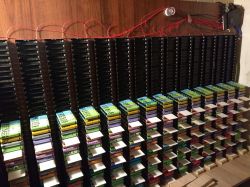
Usability testing of the eperimental-experimental 48V energy storage on 18650 cells completed.
As an answer to the eternal question "what else would you build ?", I built a "Paragon" class energy storage inspired by Leszek Kwitek https://www.youtube.com/watch?v=7a0CGuDVCBo.
After 3 months of testing with half of the capacity filled (estimated actual capacity at the moment around 12kWh, once full it will be over 24kWh), the whole thing works sensationally 🙂 .
All 18650 cells recycled. The storage after charging easily keeps the house for the next 2 cloudy days when the installation does not yield, if there are bright clouds then longer. With heavy use such as cooking dinner (induction cooker), teas, coffees, hoovering, hairdryer, my workshop work etc, the "holding" time is about 36 hours, after which it will switch to grid i.e. grid or sunshine comes out 🙂 .
I make no secret of the fact that this is a job for the patient, the persistent and those with a clue. A time-consuming and labour-intensive challenge is the very process of recovering, selecting and testing 18650 cells, a separate elaboration could be written about this process.
The cells were welded with a DIY welder assembled "on the cheap" from a microwave transformer with a universal controller, the construction of which I have described here https://www.elektroda.pl/rtvforum/topic4053341.html.
The welding and printing hoof I designed can be downloaded here https://www.thingiverse.com/thing:6808297
The storage works with a 5.5kW hybrid inverter and 4.7kW panels mounted vertically (an idea that works brilliantly), for the best yield in the autumn/winter/spring months when energy demand is greatest (including for reheating the house).
In summary, this form of storage is very convenient for utility and service purposes (adding cells online, without shutting down), the temperature culture of operation is excellent, the current carrying capacity is seamless, where per cell the currents are in the order of 250-350mA, which will hopefully ensure a long life.
Technikalia :
- 14S , 48V , 40 strings x 6 cells (target)
- Cell test : tested with LiitoKala Lii-500 chargers, they perform well in this regard
- BMS: JK BMS 20S balancer 1A, very good device, I recommend, 1A can handle balancing without any problem
- string batteries are selected and connected together with regard to capacity and internal resistance
- fuses: 4A but I would now use 5-6A
- operating thresholds of the cells: lower 3.3V , upper 4.13V, so with a margin (the settings take into account the inverter measurement error offset)
- the middle 8 strings at the terminals have 8A fuses (2x4A) and the best cells are there
- cyclic thermal imaging control, any anomalies are seen immediately but nothing happens
- cost-wise: an unbeatable revelation 🙂
- The welding and printing holder I designed is downloadable from thingiverse .
I attach a couple of photos from construction and testing
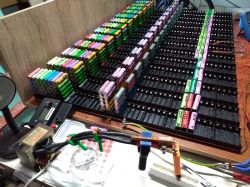

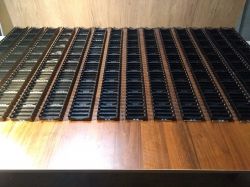 fa7a1293
fa7a1293

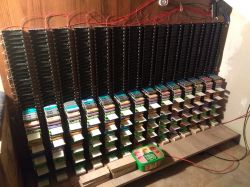 .
.
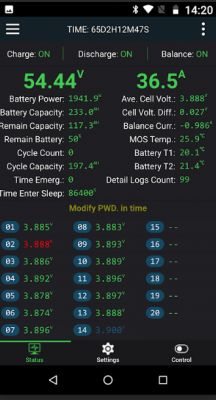

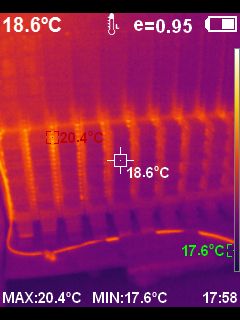
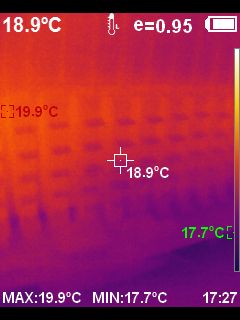 .
.
EDIT
I'm uploading additional descriptions from the Facebook discussion
Question: Let us know what condition the cells you still need should be in - could they be used but still working, or could they already be old, weak, and you are somehow remanufacturing them?
Answer: Cells should not be badly corroded (there are ways to get slightly corroded cells 🙂 ), besides, their condition before testing is irrelevant, they can be discharged to 0V, the initial condition is completely irrelevant to the quality of the cell and its wear - this will only become apparent after testing. Testing is the whole procedure to check the internal CID fuse, if the cell is completely discharged then "raise" it by 50-100mA to the catalogue threshold and after that charge with temperature control, discharge with temperature control, charge by 700mA with temperature control, measure the internal resistance, let it rest for about a month and measure again to assess possible self-discharge problems. If the cell passes all this procedure, it is suitable for storage 🙂 . If the cell has a damaged insulating sleeve then it is repackaged in new "clothing". And if it has some minor imperfections, then it is suitable for LED torches 🙂 .
Experience shows that laptop cells have a lot of rejects and a large range of parameters (but it is possible to squeeze something out of them), and the best for recovery are damaged packs from e-bikes, scooters, boards, etc.
Question: You have 5 batteries combined into one pack. My question is what happens if one battery out of these 5 makes a short circuit?
Answer: This string with the 5'ohm already has a 6'ste cell added to it just like the rest of the strings, there are 6 everywhere. A short circuit doesn't happen so it doesn't and it's there, but if it does, it's a slow process and the cell will slowly get warmer than the others, which you can see right away on the thermal imaging camera, giving you a ton of time to replace it. But assuming it suddenly short-circuits, it will trip the CID fuse that is in each cell. Assuming the CID doesn't work it will discharge the other cells in the pack and of course my fuse put on the pack will work. Same if corrosion occurs and the electrolyte leaks/leaks. So much.
BTW I've taken apart thousands of cells and unpacked hundreds of packs, and I've seen them in various states, rusted to the core, overflowing, falling apart, with beaten CID fuses (sometimes a whole pack of 50 or so cells had their CIDs beaten and went to waste), discharged to 0V etc. but I've never, I repeat NEVER found a cell that was short-circuited or short-circuited, nor any burnt out. That's basically as much of a quandary as what happens if it gets a short circuit 🙂 basically from a purely practical point of view it's the same dilemma as - what if granny had a moustache would she be a grandpa 🙂 and that's why I consider 18650 cells to be very safe.
Comment from FB:
Comments by "łolabogaspalisiejakkamiennaawPoznan" for 3.... 2... 1...
-
Hehe good , a rash of "trolls" "pyromaniacs" "firefighters" frothing and bludgeoning endlessly, on such a topic is inevitable
, a rash of "trolls" "pyromaniacs" "firefighters" frothing and bludgeoning endlessly, on such a topic is inevitable  .
.
Diagram of the warehouse, connection to the BMS
 .
.
Update 05.2025
For over a month now, the storage has completely paid for itself, so after a full financial 'blip', everything is now going to the upside. Current capacity around 20kWh.
As befits an experimental storage facility - the experiment continues - and continues to run .
.
Next information , sometime in March I noticed that some of the cell sockets from one batch started to crack after a while, so within two weeks (fortunately these were weeks of total sunlessness) the storage was rebuilt to mechanically prevent this kind of fault in the future. The cracked sockets were replaced. The sockets which have the print on them are OK and nothing happens to them, but the ones from the Chinese supplier which do not have such prints and numbers - have started to break, so I LOSE to the quality of some Chinese stuff.
Below are pics of how they break down and how I rebuilt the stock (disassembly/disassembly was one afternoon - I was surprised myself at how quickly something can be taken apart ).
).

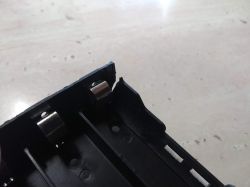 .
.
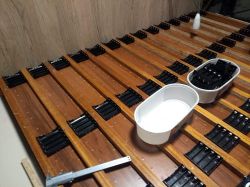
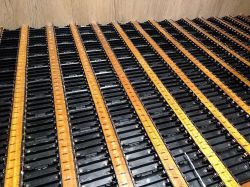 .
.
By the way, I am throwing in an example of a cell caught during a periodic thermal imaging inspection, a point of higher temperature by 3 degrees relative to the background, a cell that got a slight leak (after removing the tee shirt, I found a tiny electrolyte leak, a droplet). There was still a long way to go before such a cell was destroyed, maybe 3-6 months, but the thermal imaging had already caught the "dude" early enough - the cell was of course replaced immediately (without shutting down the storage), service-wise the design works.
Here the thought really comes to mind that if the factory packs were not sealed and people/users were able to check with thermal imaging, the number of different "accidents" could be significantly reduced.
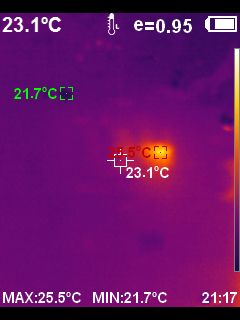
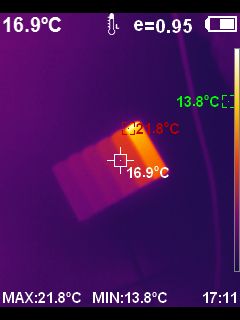

Usability testing of the eperimental-experimental 48V energy storage on 18650 cells completed.
As an answer to the eternal question "what else would you build ?", I built a "Paragon" class energy storage inspired by Leszek Kwitek https://www.youtube.com/watch?v=7a0CGuDVCBo.
After 3 months of testing with half of the capacity filled (estimated actual capacity at the moment around 12kWh, once full it will be over 24kWh), the whole thing works sensationally 🙂 .
All 18650 cells recycled. The storage after charging easily keeps the house for the next 2 cloudy days when the installation does not yield, if there are bright clouds then longer. With heavy use such as cooking dinner (induction cooker), teas, coffees, hoovering, hairdryer, my workshop work etc, the "holding" time is about 36 hours, after which it will switch to grid i.e. grid or sunshine comes out 🙂 .
I make no secret of the fact that this is a job for the patient, the persistent and those with a clue. A time-consuming and labour-intensive challenge is the very process of recovering, selecting and testing 18650 cells, a separate elaboration could be written about this process.
The cells were welded with a DIY welder assembled "on the cheap" from a microwave transformer with a universal controller, the construction of which I have described here https://www.elektroda.pl/rtvforum/topic4053341.html.
The welding and printing hoof I designed can be downloaded here https://www.thingiverse.com/thing:6808297
The storage works with a 5.5kW hybrid inverter and 4.7kW panels mounted vertically (an idea that works brilliantly), for the best yield in the autumn/winter/spring months when energy demand is greatest (including for reheating the house).
In summary, this form of storage is very convenient for utility and service purposes (adding cells online, without shutting down), the temperature culture of operation is excellent, the current carrying capacity is seamless, where per cell the currents are in the order of 250-350mA, which will hopefully ensure a long life.
Technikalia :
- 14S , 48V , 40 strings x 6 cells (target)
- Cell test : tested with LiitoKala Lii-500 chargers, they perform well in this regard
- BMS: JK BMS 20S balancer 1A, very good device, I recommend, 1A can handle balancing without any problem
- string batteries are selected and connected together with regard to capacity and internal resistance
- fuses: 4A but I would now use 5-6A
- operating thresholds of the cells: lower 3.3V , upper 4.13V, so with a margin (the settings take into account the inverter measurement error offset)
- the middle 8 strings at the terminals have 8A fuses (2x4A) and the best cells are there
- cyclic thermal imaging control, any anomalies are seen immediately but nothing happens
- cost-wise: an unbeatable revelation 🙂
- The welding and printing holder I designed is downloadable from thingiverse .
I attach a couple of photos from construction and testing


 fa7a1293
fa7a1293

 .
.



 .
.
EDIT
I'm uploading additional descriptions from the Facebook discussion
Question: Let us know what condition the cells you still need should be in - could they be used but still working, or could they already be old, weak, and you are somehow remanufacturing them?
Answer: Cells should not be badly corroded (there are ways to get slightly corroded cells 🙂 ), besides, their condition before testing is irrelevant, they can be discharged to 0V, the initial condition is completely irrelevant to the quality of the cell and its wear - this will only become apparent after testing. Testing is the whole procedure to check the internal CID fuse, if the cell is completely discharged then "raise" it by 50-100mA to the catalogue threshold and after that charge with temperature control, discharge with temperature control, charge by 700mA with temperature control, measure the internal resistance, let it rest for about a month and measure again to assess possible self-discharge problems. If the cell passes all this procedure, it is suitable for storage 🙂 . If the cell has a damaged insulating sleeve then it is repackaged in new "clothing". And if it has some minor imperfections, then it is suitable for LED torches 🙂 .
Experience shows that laptop cells have a lot of rejects and a large range of parameters (but it is possible to squeeze something out of them), and the best for recovery are damaged packs from e-bikes, scooters, boards, etc.
Question: You have 5 batteries combined into one pack. My question is what happens if one battery out of these 5 makes a short circuit?
Answer: This string with the 5'ohm already has a 6'ste cell added to it just like the rest of the strings, there are 6 everywhere. A short circuit doesn't happen so it doesn't and it's there, but if it does, it's a slow process and the cell will slowly get warmer than the others, which you can see right away on the thermal imaging camera, giving you a ton of time to replace it. But assuming it suddenly short-circuits, it will trip the CID fuse that is in each cell. Assuming the CID doesn't work it will discharge the other cells in the pack and of course my fuse put on the pack will work. Same if corrosion occurs and the electrolyte leaks/leaks. So much.
BTW I've taken apart thousands of cells and unpacked hundreds of packs, and I've seen them in various states, rusted to the core, overflowing, falling apart, with beaten CID fuses (sometimes a whole pack of 50 or so cells had their CIDs beaten and went to waste), discharged to 0V etc. but I've never, I repeat NEVER found a cell that was short-circuited or short-circuited, nor any burnt out. That's basically as much of a quandary as what happens if it gets a short circuit 🙂 basically from a purely practical point of view it's the same dilemma as - what if granny had a moustache would she be a grandpa 🙂 and that's why I consider 18650 cells to be very safe.
Comment from FB:
Comments by "łolabogaspalisiejakkamiennaawPoznan" for 3.... 2... 1...
-
Hehe good
Diagram of the warehouse, connection to the BMS
 .
.
Update 05.2025
For over a month now, the storage has completely paid for itself, so after a full financial 'blip', everything is now going to the upside. Current capacity around 20kWh.
As befits an experimental storage facility - the experiment continues - and continues to run
Next information , sometime in March I noticed that some of the cell sockets from one batch started to crack after a while, so within two weeks (fortunately these were weeks of total sunlessness) the storage was rebuilt to mechanically prevent this kind of fault in the future. The cracked sockets were replaced. The sockets which have the print on them are OK and nothing happens to them, but the ones from the Chinese supplier which do not have such prints and numbers - have started to break, so I LOSE to the quality of some Chinese stuff.
Below are pics of how they break down and how I rebuilt the stock (disassembly/disassembly was one afternoon - I was surprised myself at how quickly something can be taken apart

 .
.

 .
.
By the way, I am throwing in an example of a cell caught during a periodic thermal imaging inspection, a point of higher temperature by 3 degrees relative to the background, a cell that got a slight leak (after removing the tee shirt, I found a tiny electrolyte leak, a droplet). There was still a long way to go before such a cell was destroyed, maybe 3-6 months, but the thermal imaging had already caught the "dude" early enough - the cell was of course replaced immediately (without shutting down the storage), service-wise the design works.
Here the thought really comes to mind that if the factory packs were not sealed and people/users were able to check with thermal imaging, the number of different "accidents" could be significantly reduced.





Comments
Revelation, we have it all: - recovery of old cells - free energy - independence - ecology This is the trend, so my advice is to slowly get used to energy storage in homes and even flats. They... [Read more]
. Rather not in flats. After a fire in an apartment building in Poznan, critical voices were raised: - Is it safe to charge battery-powered devices in flats (houses/multi-family blocks). - Whether... [Read more]
For now, these are voices, there is no legislation. And the trend will continue. Anyway.... let there be cheap energy, then no one will entertain such things. "Electricity is ubiquitous in unlimited... [Read more]
Thanks for the good word :) . - Through recovery, the cost of acquisition is acceptable. - The government (everyone) hates people having something for nothing, there are already plans to tax even garden... [Read more]
The late Nicola was both a genius and a moron or technical moron . For example, he connected himself to the earth by blowing up a power station (there were no fuses yet) [Read more]
Someone has finally made a magazine a'la "Paragon". Nikola was a non-secure-for-business visionary - if there was free unlimited energy then there would be redundant politicians :) [Read more]
. Can you elaborate ? Li-Pol-e is easier to damage mechanically, but it is not a problem here. Is it about the higher short circuit current for model cells ? . Can you please provide more on this... [Read more]
First time I've heard that it has merged with the earth - will you elaborate on what you are talking about? I'm curious too... [Read more]
only you still need to have a source for such cells :) [Read more]
His Lordship, not fully enlightened, tried to transmit through the soil (he forgot the granite (not very funny ) Added after 7 [minutes]: To @sq3evp it just shook the surrounding buildings as it... [Read more]
Any source link? We'll have a read... I've read a lot about Tesla, but couldn't find this anywhere. The idea of energy transfer was very interesting - it's not possible, but maybe nobody has figured out... [Read more]
I once used such a cage for a screwdriver and it melted and the cells weren't even high current :/ Aren't you afraid that it might flow off the wall for you one day? [Read more]
Yes, Li-Pol's are easily damaged mechanically, that's one thing. But their biggest disadvantage, which is also from my experience, is very fast chemical degeneration and problems precisely with overheating... [Read more]
Ok then good luck 👀👍🐒 [Read more]
Oh that's what I don't see ... there is no way that the average blacksmith can take advantage of negative prices ... even lower ... to the average blacksmith it is always like charging for gold. But if... [Read more]
. There may be negative prices on the market, but for Kowalski, adding the margin, the transmission fee, the X fee, the Y fee, the smile fee, energy will always cost. Nevertheless, certainly lower than... [Read more]
. Sometimes a thought comes to mind, so hypothetically: I live in a block of flats. If I use as much electricity all the time as is used on average by at least 5 flats in this block of flats put together... [Read more]
At the moment, no and it doesn't matter if you don't exceed the declared contractual power (you have it on your contract). On the other hand, what will happen one day, will there be power shortages because... [Read more]
And this is where all in white the atom comes in as the best solution, clean burning technologies with new types of coolant in reactors, you could burn the existing accumulated waste from nuclear power... [Read more]